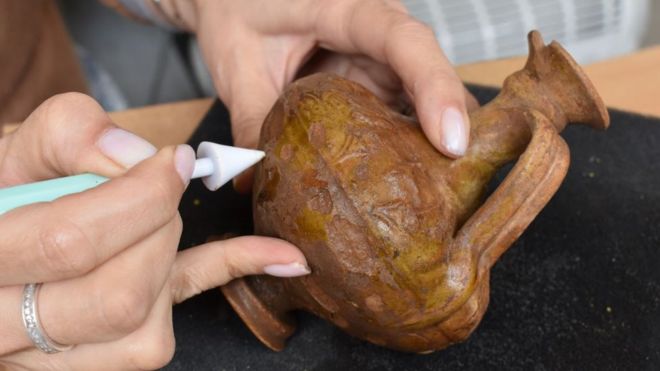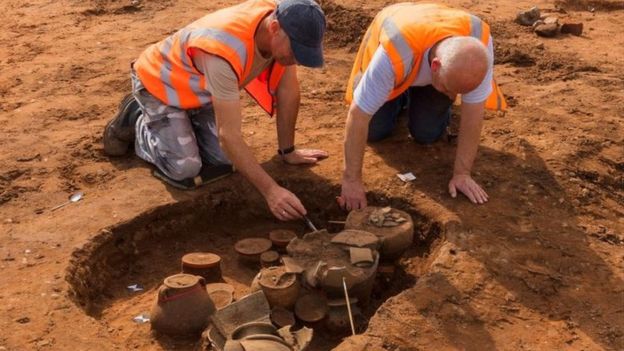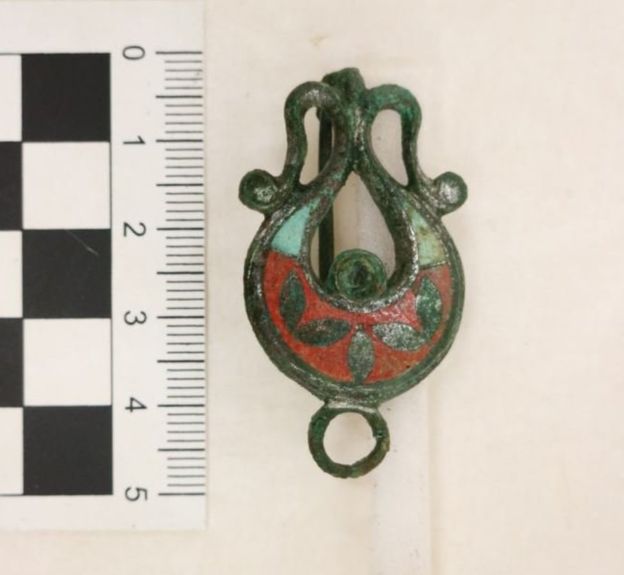Archaeology shock: Ancient Roman and Anglo-Saxon artefacts found near UK airport
“Breathtaking” Roman and Anglo-Saxon artefacts have been discovered in burial sites near the edge of an airport.

Pots, jugs and jewellery were found in Baginton, next to Lunt Roman Fort and Coventry Airport in Warwickshire.
Archaeologists believe two of the graves contained a “high status” ranking officer and Roman girl, aged between six and 12. The artefacts could go on display at local museums.
The pieces were found during a dig at a housing development site in summer 2017 but many of the items have only just been officially dated and verified by experts.
Senior archaeologist Nigel Page, from Warwickshire County Council which led the dig, said it was a “remarkable” find.
“It’s a significant discovery in the West Midlands,” he said. “There was a real buzz of excitement when the site was found. It’s breathtaking.”

A decorative brooch was found within a Roman cremation burial site of a young girl. It was one of four brooches from a small pile of jewellery placed in the grave and covered by a polished mirror.
Other jewellery included a ring, with an image of a cicada – an insect associated with immortality – and a hairpin. Experts said the items and imagery on some of the jewellery suggested a link to southern Europe.

A dozen Anglo-Saxon graves were excavated, some of which contained goods including a Frankish vessel from the northern France and Belgium area.
“The presence of the Frankish vessel suggests that, just as during the Roman period, goods and people were moving into and through the area from a wide area, including from Europe,” Mr Page said.
One burial contained the centre of a shield, fragments of a knife blade in its leather sheath and a crushed copper alloy hanging bowl. Experts said the richness of the Anglo-Saxon grave suggested a person of reasonably high status, such as a high ranking officer.
“The settlement at Baginton continued to flourish after the Romans left in the early 5th Century,” added Mr Page.





